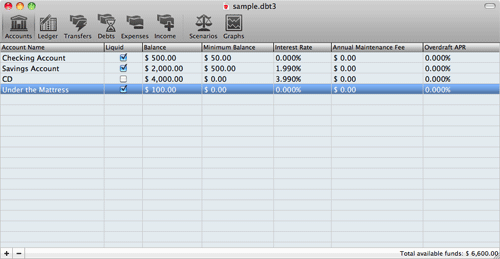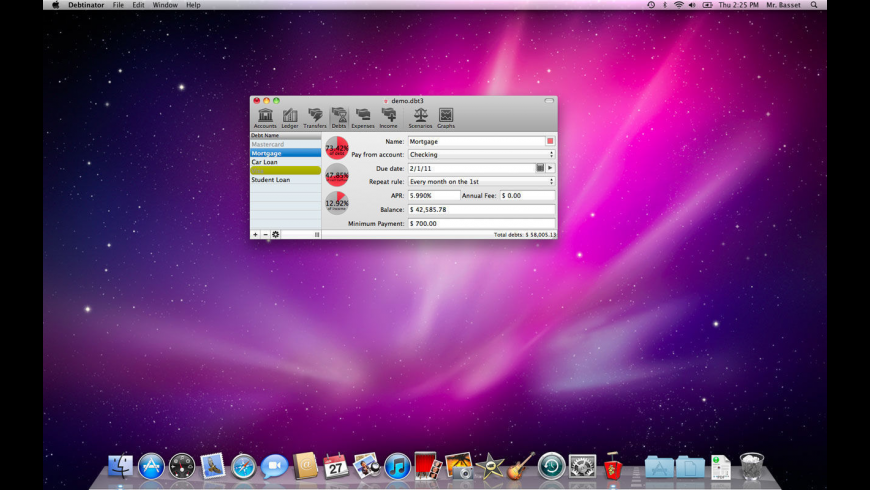

So from the Payment Plan popup on the bottom, select Minimum Fee Only Payment Plan (It's the

Now the big number - type in the outstanding balance on your debt.If there's an annual fee (some credit cards have them), fill it in here.Next, you need to fill in the APR for this debt.Same as before, fill in the name of the debt.Īllow you to do things like get paid every other Friday or the 15th and 30th of the month.Student loans, your mortgage, credit cards, car loans. This is anything and anyone you owe money to. Click on the Debts Pane (Immediately to the left of Expenses on the toolbar).Debtinator is all about getting your debts paid off, so here's where you've got to list them all. Now you're finally at the bread and butter. For more information, see Working with Expenses.Later on, you'll want to get rid of this expense and migrate to using Budgets, but don't Money you're going to spend, but you don't know exactly how much, when you're going to spend it, Entertainment, Food, Gas, that sort of thing. Put in roughly what you think you spend during day to day life For now, we also recommend adding in a catch-all "Household Expenses" expense.If this expense ever ends on its own (maybe you're paying a pool membership for the next three months), then click off that it ends and fill in.You can either type the next date in, or hit the little calendarĪllow you to do things like pay a bill every 6 months or on the 15th and 30th of the month. Next thing is important - put in the next date that it's due.But if you set up multiple accounts and need to pay from a different one, then select it here. Debtinator will default to paying from the first bank account you have on the accounts screen.Next, fill in how much this is going to cost you.Don't worry if you forget one! You can always add it in later to improve accuracy. Keep adding in as many of those as you can think of.Your electric bill, a gym membership, and a magazine subscription are all typical examples of Expenses. Expenses are typically fixed dollar amount things that you have to pay to a single party. Hit the + button to add an expense event.Click on the Expenses Pane (Immediately to the left of Income on the toolbar).

For more information, see Working with Income.Virtually segment your bank account, then go read about Working with Budgets There's a big table here to fill in funding for various Budgets, but we're not going to worry about that right now.If this Income ever ends on its own (maybe you're getting seasonal Income for the next 3 months), then click off that it ends and fill in.That'llĪllow you to do things like get paid every other Friday or the 15th and 30th of the month. The popup gives you aĬouple of common options, but if you need something more advanced, choose the last option (Custom) to get into the custom date editor. By default, it'll be set to once a month on the given date. The arrow button next to the calendar advances the due date to the next You can either type the next date in, or hit the little calendarīutton at the end of the field to get a popup to select the date there. Next thing is important - put in your next payday.But if you set up multiple accounts and need to deposit into something else select it here. It will default to depositing into the first bank account you have on the accounts screen.First and foremost, you want to add in your payday.


 0 kommentar(er)
0 kommentar(er)
